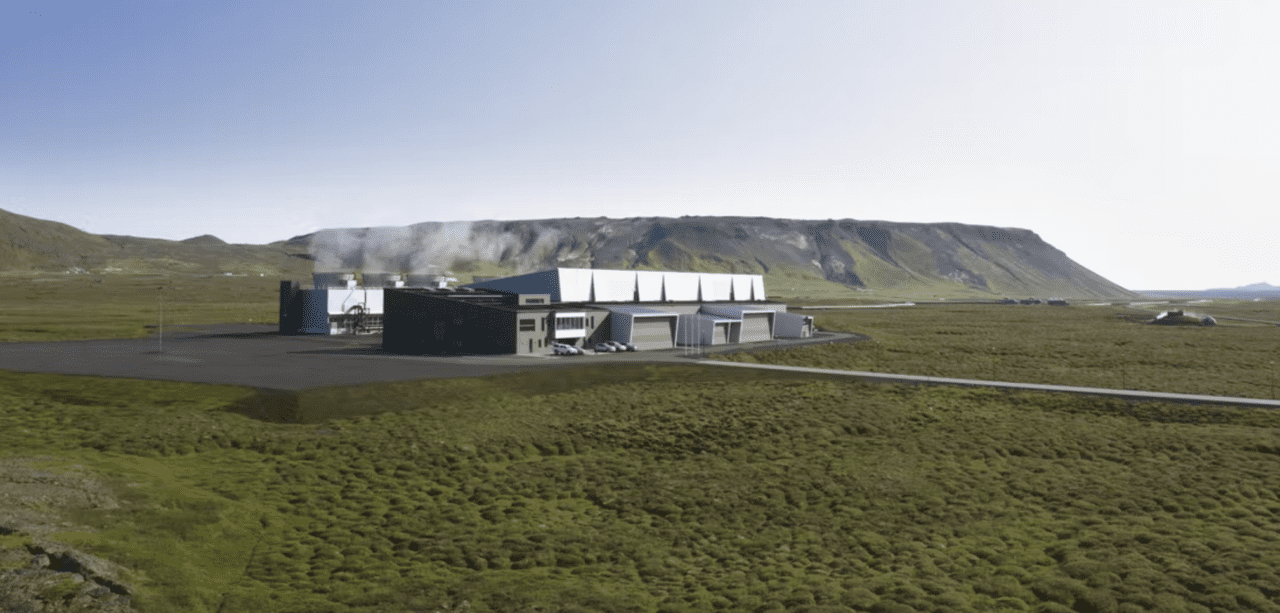Carbon Capture and Storage | Europe
Carbon Capture and Storage | Europe https://energycentral.com/c/gr/hydrogen-grid-carbon-dioxide-pipelines-scotland-germany CCS and Hydrogen
Energy Central…
Your Source for Energy Jobs & Industry News
Carbon Capture and Storage | Europe https://energycentral.com/c/gr/hydrogen-grid-carbon-dioxide-pipelines-scotland-germany CCS and Hydrogen
Energy Central…

Landsvirkjun, the national power company of Iceland, on June 28 announced it intends to capture and reinject carbon dioxide (CO2) from Þeistareykir (Theistareykir) Geothermal Station, and at the same time reduce CO2 emissions from Krafla Power Station through enhanced well management efforts at that site. Construction of the project, called Koldís, is expected to begin next year, and the project should be fully operational by 2025.
Landsvirkjun wants its operations to be carbon neutral in 2025, and already has progressed toward that goal, reducing the group’s carbon footprint by 61% since 2008. A major part of its strategy is to significantly reduce emissions from geothermal power generation, as the vast majority of the company’s greenhouse gas emissions are generated by geothermal energy. Landsvirkjun expects the Koldís project will capture almost all CO2 and hydrogen sulfide from the two-unit, 90-MW Theistareykir power station (Figure 1), and return it to the ground for storage, from 2025 onward.


A leading company in the design of technology for a variety of industries is part of an effort to advance carbon capture from power plants, along with providing a solution to emissions of carbon dioxide (CO2) from industrial facilities.
Honeywell, the Charlotte, N.C.-based conglomerate known for products from residential thermostats to advanced aerospace applications, on Dec. 15 announced a licensing agreement with the Texas Carbon Management Program Group (TxCMP) at the University of Texas-Austin. The groups are working on an advanced solvent technology that will capture CO2 generated from combustion flue gases at coal-, natural gas-, and oil-fired power plants, as well as from steel and cement manufacturing sites and other industrial facilities.
“As the world proactively seeks technology solutions that limit greenhouse gas emissions, we recognize that carbon capture technology is an important lever available today to reduce emissions in carbon-intensive industries that have few alternative options, such as steel plants and fossil fuel power plants,” said Ben Owens, vice president and general manager, Honeywell Sustainable Technology Solutions.…
The post ExxonMobil Extends Deal for Fuel Cell Carbon Capture Project appeared first on POWER Magazine.
ExxonMobil and FuelCell Energy announced a new joint-development agreement to enhance carbon capture fuel cell technology, as the groups work on a process to capture combustion exhaust from power plants and other industrial facilities.
The two-year deal, announced Nov. 6 and an extension of an earlier agreement, is aimed at optimizing core technology, process integration, and large-scale deployment of carbon capture. FuelCell Energy’s technology uses carbonate fuel cells to capture and concentrate carbon dioxide (CO2), with the CO2 sent to the fuel cell. The fuel cell produces power and captures and concentrates the CO2 for storage.
“We have a great opportunity to scale and commercialize our unique carbon capture solution, one that captures about 90 percent of carbon dioxide from various exhaust streams, while generating additional power, unlike traditional carbon capture technologies which consume significant power,” FuelCell CEO Jason Few said in a statement.…
The New York-based hedge fund aiming to take over New Mexico’s San Juan Generating Station (SJGS), targeted for closure by state lawmakers, wants to refit the 46-year-old, coal-fired plant to use carbon capture and sequestration (CCS) technology.
Acme Equities LLC said last week that retrofitting the 847-MW plant with CCS technology would cut carbon emissions by 90% and offer the plant another revenue stream—selling the captured CO2 to help produce oil. Acme is negotiating with local Farmington, N.M., officials to take over the San Juan plant, a major employer in the area, and keep it operating.
Injecting carbon dioxide into older oil fields has been done for years to encourage wells to continue producing oil.
But state lawmakers expressed doubts about the technology even as they pushed a bill (Senate Bill 489) that would close the plant by 2022, limit the financial hit to the plant’s current ownership, and preserve tax revenue for local schools.
Lawmakers wondered about the economic viability of the CCS technology during discussions March 2 with the state’s Senate Corporations and Transportation Committee.…
The budget bill passed by Congress and signed by President Trump in the early hours of February 9 extends a host of tax credits for energy technologies, including provisions to help the Vogtle nuclear expansion in Georgia as well as U.S. carbon-capture projects.
The legislation also provides support for renewable energy, including for small wind turbines and geothermal pumps. It also gave five-year tax credit extensions to small natural gas technologies, including combined heat-and-power (CHP) and microturbines, along with fuel cells.
The Senate version of the bill reportedly included proposals to boost offshore wind energy, energy storage, waste heat to power, and large-scale geothermal generation projects. None of those efforts survived in the House and are not included in the final legislation.
The bill also includes $ 2 billion to help with rebuilding the electricity grid in Puerto Rico, where about 30% of the island remains without power after hurricanes Irma and Maria battered the Caribbean last September. Those funds are part of $ 89 billion in disaster funding for U.S.…